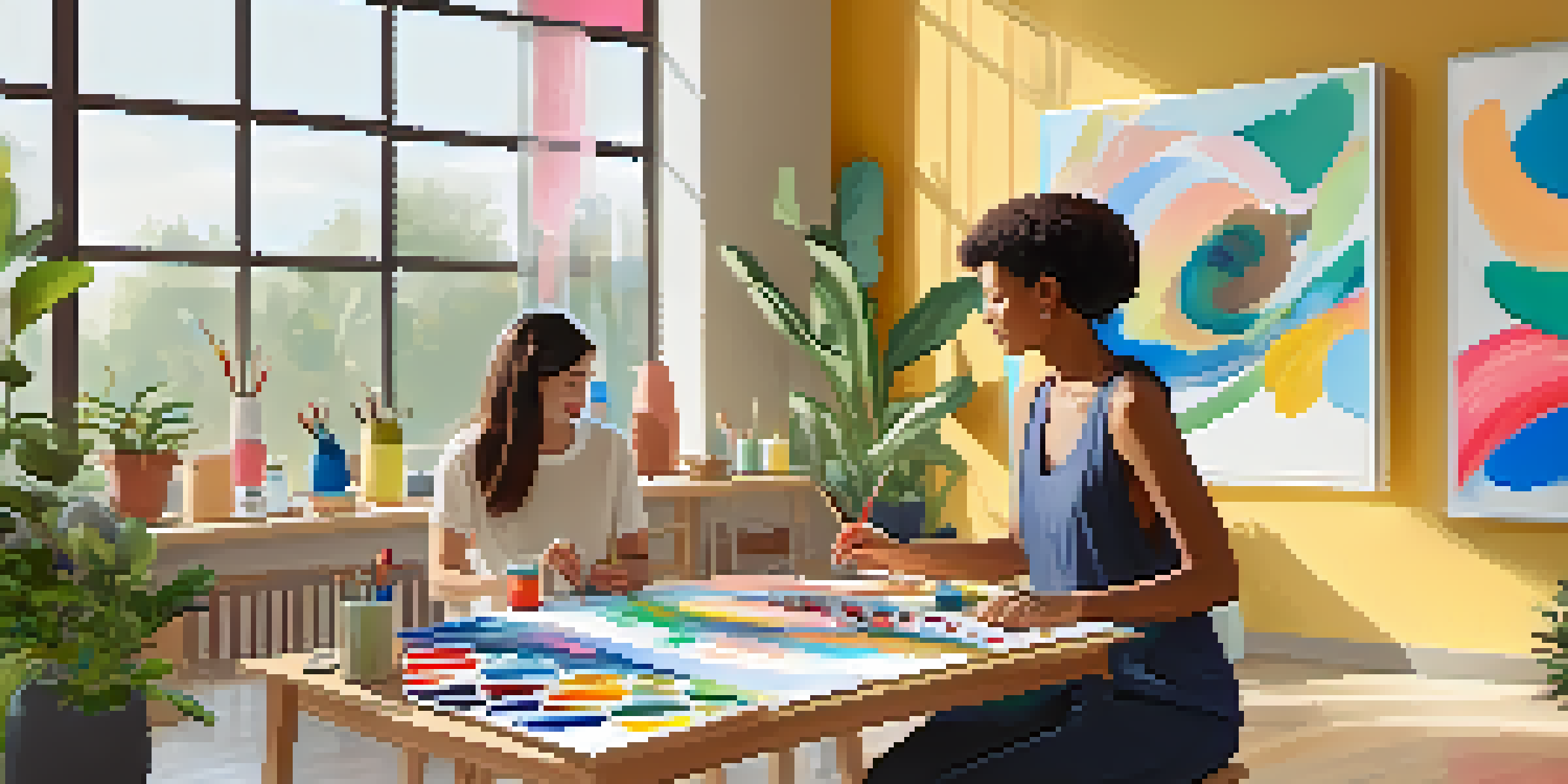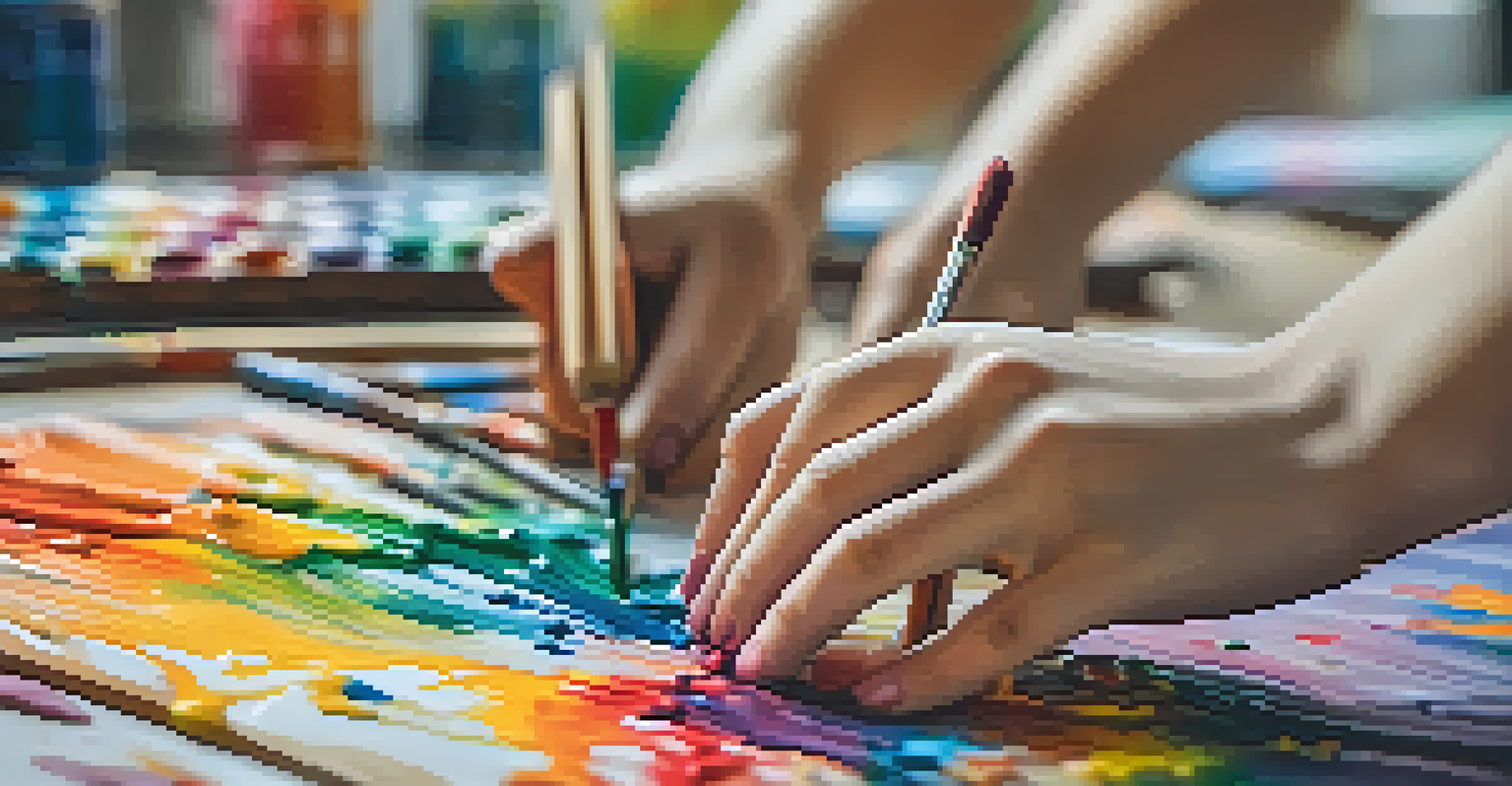Exploring the Benefits of Art Therapy Techniques for Healing

What is Art Therapy and How Does It Work?
Art therapy is a therapeutic practice that uses creative expression to help individuals process emotions and experiences. By engaging in artistic activities, such as painting or drawing, people can explore their feelings in a safe environment. Unlike traditional talk therapy, art therapy allows for non-verbal communication, making it accessible for those who find it hard to articulate their thoughts.
Art is not what you see, but what you make others see.
This approach is grounded in the belief that the creative process can foster self-discovery and emotional healing. As individuals create art, they often uncover insights about their feelings that may not be immediately apparent. It's a unique blend of psychology and art, aiming to heal through creativity and expression.
Art therapists are trained professionals who guide clients in using art as a medium for exploration and healing. They provide a supportive space for individuals to express themselves without judgment, facilitating a journey towards understanding and resolution.
The Emotional Benefits of Art Therapy Techniques
One of the most significant benefits of art therapy is its ability to enhance emotional well-being. Engaging in creative activities can help reduce anxiety, depression, and stress by providing an outlet for expression. For many, creating art serves as a cathartic release, allowing them to process difficult emotions that might otherwise remain bottled up.

Additionally, art therapy promotes mindfulness, a practice that encourages individuals to stay present and engaged in the moment. This focus can lead to a reduction in racing thoughts and a greater sense of peace. Clients often report feeling lighter and more balanced after sessions, as they let go of emotional burdens through their artwork.
Art Therapy Facilitates Emotional Healing
Art therapy enables individuals to process emotions and experiences through creative expression, fostering self-discovery and emotional healing.
Moreover, the act of creating art can boost self-esteem and self-confidence. As individuals produce tangible pieces of work, they gain a sense of accomplishment that reinforces their sense of identity and worth.
Art Therapy Techniques for Stress Relief
Art therapy techniques can be particularly effective in managing stress. Activities such as doodling, painting, or sculpting allow individuals to focus their mind on the creative process rather than their stressors. This shift in focus can provide a much-needed break from the pressures of daily life.
Every artist was first an amateur.
For instance, coloring books designed for adults have gained popularity as a simple way to unwind. Many find that the repetitive motion of coloring helps to calm the mind and promote relaxation. Similarly, creating abstract art can be a liberating experience, allowing for spontaneous expression without the constraints of realism.
Furthermore, the sensory aspect of working with different mediums—such as the texture of clay or the vibrancy of paint—can enhance the overall therapeutic experience. These sensory interactions can ground individuals and anchor them in the present moment, mitigating feelings of overwhelm.
Building Connections Through Art Therapy
Art therapy can also foster connections between individuals, whether in group settings or one-on-one sessions. Shared artistic activities can break down barriers and promote a sense of community among participants. This connection is particularly valuable for those who may feel isolated or disconnected from others.
In group art therapy sessions, participants often share their creations and stories, creating a supportive environment where they can relate to each other's experiences. This sharing can lead to empathy and understanding, reinforcing bonds that help individuals feel less alone in their struggles.
Stress Relief Through Creative Activities
Engaging in art therapy techniques like painting and doodling can significantly reduce stress and promote relaxation.
The collaborative nature of some art projects, like mural painting or group collages, can also enhance teamwork and communication skills. These interactions not only build connections but also help individuals develop important social skills that can be beneficial in their daily lives.
Art Therapy for Trauma Healing
Art therapy techniques are particularly effective for individuals who have experienced trauma. For many, discussing traumatic experiences can be incredibly challenging. Art provides an alternative way to express those feelings without having to articulate them verbally.
Through creative expression, clients can visualize and give shape to their trauma, which can be an essential step in the healing process. This method often allows individuals to reclaim their narrative and find empowerment in their stories. For example, a survivor of trauma might create art that symbolizes their journey toward healing, helping them to process their experience.
Moreover, art therapy offers a safe space to explore painful memories at one's own pace. This controlled environment can help reduce feelings of vulnerability, making it easier for individuals to confront and work through their emotions.
Exploring Different Art Therapy Techniques
There are various art therapy techniques that cater to different preferences and needs. Some common methods include painting, clay modeling, collage making, and even digital art. Each technique brings its unique benefits and can resonate differently with individuals based on their personal experiences and comfort levels.
For instance, painting might appeal to someone looking to express their emotions through color and form, while collage making can allow for a more abstract representation of feelings. Each technique provides a distinct avenue for self-exploration and can help clients connect with their inner selves.
Art Therapy Builds Community Connections
Participating in group art therapy fosters connections and empathy among individuals, helping them feel less isolated in their struggles.
Additionally, some therapists incorporate movement and body awareness into their sessions, blending art with techniques like dance or drama. This holistic approach can further enhance the therapeutic experience, allowing for a deeper connection between mind and body.
Finding the Right Art Therapist for You
Choosing the right art therapist is crucial for a successful therapeutic journey. It's essential to look for a certified professional who has experience in both art and therapy. Many therapists have specific areas of expertise, so finding someone who aligns with your needs and goals can make a significant difference.
During initial consultations, don't hesitate to ask about their methods, training, and therapeutic approach. A good therapist will encourage questions and ensure you feel comfortable with their style. Trust and rapport are fundamental to the therapeutic process, and finding the right fit can enhance your experience.

Additionally, consider whether you prefer individual sessions or group therapy. Each format offers unique benefits, so reflect on what environment you feel most comfortable in. Ultimately, the goal is to find a supportive space where you can freely explore your creativity and emotions.